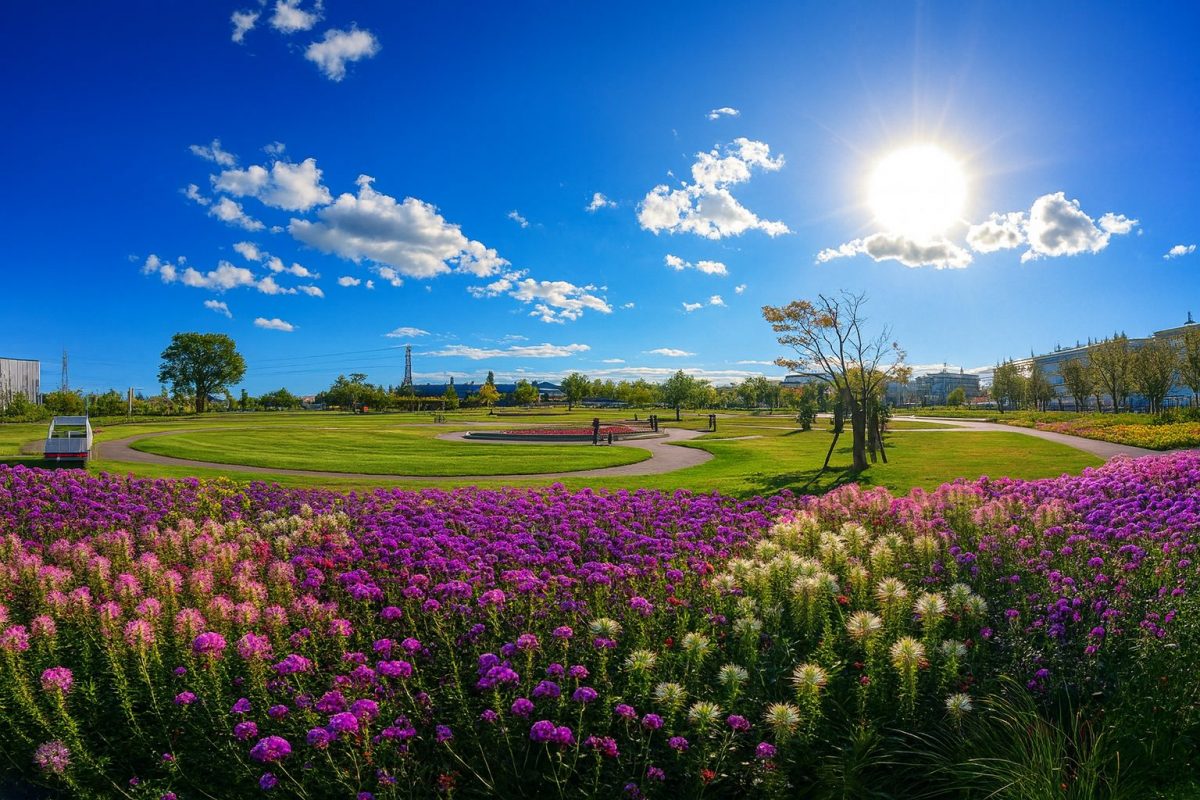| population | 70,246 peoples |
|---|---|
| area | 294.65 km² |
| population density | 238 peoples/km² |
Eniwa City, located in western Hokkaido, lies almost halfway between Sapporo and New Chitose Airport. Known nationwide as the “City of Flowers,” Eniwa has gained high recognition for its citizen-led greening and gardening activities. The city’s beautiful residential areas, such as the Megumino district, have received multiple national awards for urban landscape design. With roots tracing back to the pioneering era of the Meiji period and cultural influences from the indigenous Ainu people, Eniwa harmoniously blends history, nature, and modern living. About two-thirds of its land area is forested and forms part of Shikotsu-Toya National Park. Surrounded by scenic spots like Mt. Eniwa and the Eniwa Gorge, the city offers magnificent seasonal landscapes. It also enjoys balanced economic development through agriculture and industry, including the Sapporo Breweries Hokkaido Plant. Thanks to its proximity to both Sapporo and New Chitose Airport, Eniwa is one of the most livable cities in Hokkaido.
Culture and Traditions
The name “Eniwa” originates from the Ainu word “E-En-Iwa”, meaning “pointed mountain,” referring to the iconic Mt. Eniwa that overlooks the city. Since the early Meiji period, settlers from Yamaguchi and Kochi Prefectures opened farmland here, developing rice cultivation and dairy farming. Today, Eniwa is recognized as one of Japan’s leading gardening cities, where flowers, greenery, and civic pride flourish. The Megumino district, in particular, received the National Urban Landscape Award for its harmony between nature and urban design.
Local life is deeply connected with nature and community spirit. Residents actively participate in beautification and cultural events such as the Eniwa Summer Festival and the Snow Light Festival, which illuminate the city with traditional music, lights, and handcrafted snow lanterns. Hokkaido dialects and remnants of Ainu customs remain part of daily communication and festivals. Through this blend of tradition and modern culture, Eniwa represents the ideal balance between humanity and nature — a city where flowers, history, and warmth coexist.
Local Specialties
- Ebisu Pumpkin: First cultivated in Eniwa in 1964, this variety of pumpkin became famous across Japan as “Eniwa no Ebisu.” It’s used in local sweets, puddings, and pastries, loved for its rich, sweet flavor.
- Flower Seedlings: Eniwa is one of Hokkaido’s top producers of flower seedlings. Many of the blooms in Sapporo’s Odori Park are grown here, representing the city’s craftsmanship and horticultural excellence.
- Eniwa Rice: Known as the birthplace of successful rice cultivation in Hokkaido, Eniwa continues to produce high-quality rice using eco-friendly “clean agriculture” methods.
- Ecological Lamb Meat from Ecorin Village: At Ecorin Village, free-range lamb is raised in a stress-free environment. The meat is tender and flavorful, featured in local restaurants.
- Local Sweets: Desserts made with local pumpkins and sweet potatoes are popular souvenirs, especially at Flower and River Station “Hana Road Eniwa”.
Annual Events
- Eniwa Cherry Blossom Festival: Held every spring at Megumino Central Park, visitors can enjoy hanami (cherry blossom viewing) with local food stalls and stage performances.
- Eniwa Summer Festival: The city’s major summer event, featuring taiko drumming, bon dances, and fireworks, drawing families and tourists from across Hokkaido.
- Ecorin Village Garden Festival: At Ecorin Village, gardening workshops, flower exhibitions, and garden tours attract enthusiasts every summer.
- Eniwa City Sports Festival: A long-standing community event that promotes health and unity through athletic competitions among neighborhoods.
- Eniwa Snow Light Festival: In winter, venues such as Hanafuru are illuminated by handmade snow lanterns, creating a magical winter landscape.
Access
- By Air: The nearest airport is New Chitose Airport, about 30 minutes by car or airport bus to central Eniwa.
- By Train: JR Eniwa Station on the Chitose Line provides direct access to Sapporo and the airport. The Rapid “Airport” train takes around 25 minutes to Sapporo.
- By Bus: The Eniwa Community Bus connects neighborhoods within the city, while highway buses by Hokkaido Chuo Bus link to Sapporo and Chitose.
- By Taxi: Taxis are available at major train stations and the airport, offering direct transfers to hotels and sightseeing spots.
- By Car: The Eniwa Interchange on the Hokkaido Expressway provides easy access from Sapporo and Tomakomai.
Tourist Attractions
- Eniwa Gorge (Shiraito, Rarumanai, and Sandan Falls) – A series of stunning waterfalls within lush forest, especially beautiful in autumn.
- Ecorin Village – A family-friendly ecological park featuring sheep pastures, gardens, and cafes focused on sustainability.
- Hanafuru (Flower Base Eniwa) – A modern flower-themed complex with gardens, cafes, and local product shops.
- Flower and River Station “Hana Road Eniwa” – A popular roadside station with tourist information, souvenir shops, and fresh local produce.
- Eniwa Onsen Honoka – A natural hot spring and spa complex offering open-air baths and saunas for relaxation.
